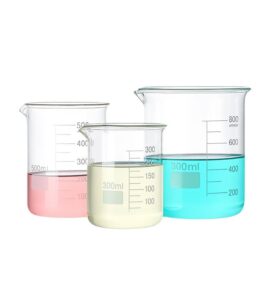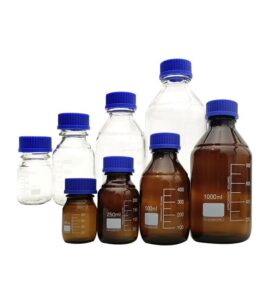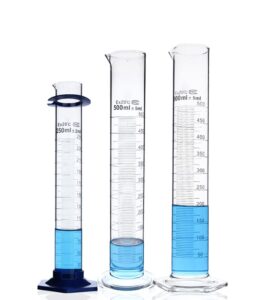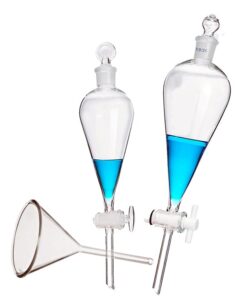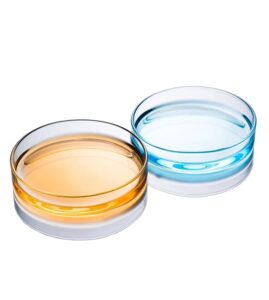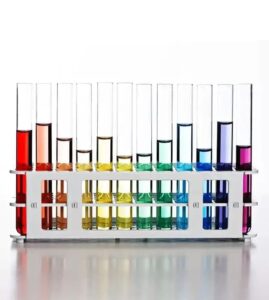Have you ever pondered the precision behind the power of modern laboratories? What makes every test, every experiment, and every result reliable? Behind every data point and discovery lie the unsung heroes: the meticulously calibrated instruments.
Accurate lab instrument calibration is essential for ensuring the reliability and validity of experimental results. It involves adjusting and checking the accuracy of instruments relative to a known standard. Calibration ensures that measurements are accurate and traceable to national or international standards, reducing errors and enhancing the quality of data. But what does it take to achieve next-level accuracy in lab instrument calibration? It involves stringent procedures, skilled technicians, and a deep understanding of each instrument’s nuances. The journey to unmatched precision is both an art and a science.
Keep reading to unlock the secrets!
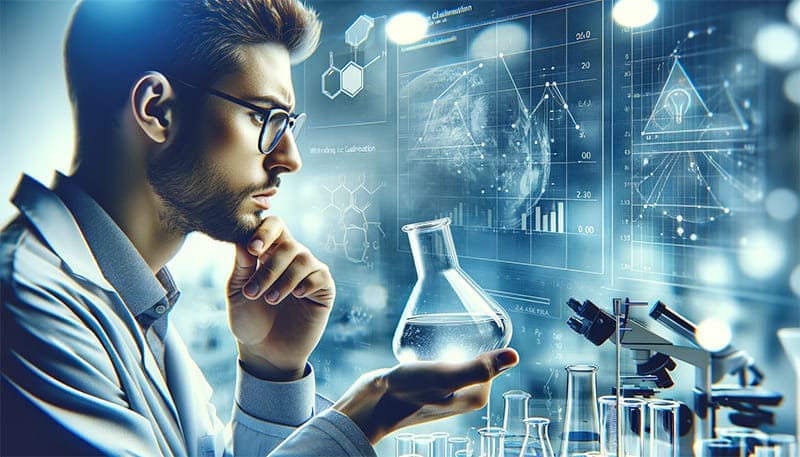
Understanding Calibration: Why Is It Fundamental?
Precision and reliability are the cornerstones of scientific research. Calibration of glassware refers to the process of testing and calibrating the dimensions, shape, and graduations of glass instruments using certain methods and techniques to ensure their accuracy and reliability. Essentially, it compares a known ‘standard’ measurement to the measurement using your instrument. It’s crucial for achieving accurate, reliable, and consistent results.
Without calibration, the validity of experimental data falls into question, leading to potential errors in research findings, product development, and safety protocols. Calibration is not just about compliance; it’s about ensuring the highest standards of quality and reliability in scientific work.
What Are the Types of Calibration
The calibration method for glass instruments varies depending on the type of instrument and the calibration requirements. Common calibration methods include the weighing method, volumetric comparison, and titration. The weighing method, one of the most common, involves accurately measuring the mass of pure water released from or contained in the instrument at a certain temperature. This mass is then converted into volume based on the density of water at that temperature, determining the true volume of the instrument. The volumetric comparison method compares two glass instruments of the same or different volumes to ensure they meet required capacities. The titration method uses reagents of known concentration in a specific titration process to calibrate the instrument.
| Calibration Method | Applicable Instruments | Advantages | Disadvantages |
|---|---|---|---|
| Weighing Method | Balances, pipettes, burettes | High accuracy, widely applicable, straightforward process | Time-consuming, requires precise temperature control |
| Volumetric Comparison | Volumetric flasks, graduated cylinders | Direct comparison, easy setup | Less precise for very small volumes, dependent on the accuracy of reference instrument |
| Titration | Burettes, volumetric pipettes | Specific to solution concentration, high precision | Requires standardized solutions, more complex procedure |

Calibration Needs for Common Laboratory Glassware
Maintaining the accuracy of laboratory measurements involves regular calibration of various glass instruments. Below is a table outlining some of the most common pieces of glassware, along with the recommended calibration methods and key considerations to ensure effective and reliable calibration.
| Glass Instrument | Recommended Method | Important Calibration Considerations |
|---|---|---|
| Volumetric Flasks | Volumetric Comparison | Check for cleanliness, ensure there are no etchings or cracks. Be mindful of temperature variations as they can affect volume. |
| Pipettes | Weighing Method | Inspect the tips for chips or damage, and verify the accuracy of the delivered volume. Ensure complete drainage during use. |
| Burettes | Titration | Regularly verify zero error and ensure the smooth operation of the burette tap. Check for any inconsistencies or leaks. |
| Graduated Cylinders | Weighing Method | Make sure they are free from deformation and properly calibrated against known standards for accurate volume measurements. |
Strategies for Effective Calibration of Glass Instruments
The process of calibration is pivotal in maintaining the precision and reliability of glass instruments used in scientific research and industry. To ensure accurate measurements, it is crucial to undertake a series of steps tailored to the specific needs of each instrument.
- Select the appropriate calibration method: Choose the right method based on the type of glass instrument and calibration requirements.
- Determine calibration parameters: Depending on the parameters that need calibration, such as volume or graduations, perform the necessary tests and calibration.
- Control the calibration environment: Pay attention to controlling environmental factors like temperature and humidity to ensure the accuracy of calibration.
- Choose the right standard instruments: Use certified standard instruments for calibration to ensure accuracy.
- Regular calibration: Glass instruments may be subject to wear and tear, contamination, and other factors that can affect accuracy, necessitating regular calibration to maintain reliability.
By adhering to these guidelines, you can ensure that glass instruments are consistently delivering accurate and reliable results. This systematic approach to calibration not only upholds the integrity of experimental outcomes but also extends the longevity and functionality of the instruments themselves. Remember, meticulous calibration is the cornerstone of all precise scientific measurements.

Comprehensive Steps for Calibrating Laboratory Glassware and Instruments
Accurate measurement is fundamental in laboratory settings, and the calibration of glassware and other instruments is a critical step to ensure precision. Calibration involves specific and detailed methods tailored to each type of instrument, from graduated cylinders and beakers to more complex optical devices.
Calibration of Graduated Cylinders and Beakers
- Place the cylinder or beaker on a flat surface and measure its maximum diameter with calipers, recording the value.
- Pour a known quantity of water into the cylinder or beaker, weigh the water using a balance, and record the weight.
- Calculate the volume of the water based on its density and compare it to the graduations on the cylinder or beaker to assess accuracy.
Calibration of Burettes
- Place the burette on a stable surface and measure its maximum and minimum diameters with calipers, recording the values.
- Add a known quantity of water, weigh the water, and record the value.
- Calculate the volume of the water based on its density and compare it to the graduations on the burette to assess accuracy.
Calibration of Volumetric Flasks
- Place the volumetric flask on a stable surface and measure its maximum diameter and the diameter of the base with calipers, recording the values.
- Add a known quantity of water, weigh the water, and record the value.
- Calculate the volume of the water based on its density and compare it to the marked volume on the flask to assess accuracy.
Calibration of Thermometers
- Place the thermometer on a stable surface and measure its length and diameter with calipers, recording the values.
- Place it in a constant temperature water bath and observe if the readings match the water bath temperature. Calibrate or replace the thermometer if there is a significant discrepancy.
Calibration of Hydrometers
- Place the hydrometer on a stable surface and measure its maximum and minimum diameters with calipers, recording the values.
- Place it in a solution of known density, like saltwater, and observe if the readings match the standard values. Calibrate or replace the hydrometer if necessary.
Calibration of Optical Instruments
For optical instruments like microscopes and spectrophotometers, several calibrations are needed:
- Centering correction: Focus on a line or pattern and check if it’s centered in the field of view.
- Optical axis correction: Direct a point light source and observe if it’s aligned straight.
- Magnification correction: Observe a known size object and compare its observed size to the actual size.
By meticulously following these calibration procedures, scientists and technicians can maintain the accuracy and reliability of their glass instruments, ensuring the validity of their experimental results. Regular and careful calibration is the cornerstone of quality and precision in every scientific endeavor.

How Often Should Instruments Be Calibrated?
The frequency of calibration depends on several factors: the instrument’s usage rate, the manufacturer’s recommendations, the precision required for specific experiments, and regulatory standards. Generally, a regular calibration schedule is maintained, and instruments are also recalibrated after any repairs, modifications, or if a discrepancy in measurement is detected.
Troubleshooting and Maintenance
Calibration and regular maintenance are two sides of the same coin in the realm of laboratory accuracy and reliability. While calibration ensures that instruments measure correctly, maintenance is crucial for keeping them in optimal working condition. Here are insights into common issues in calibration and strategies for effective maintenance.
Common Issues in Calibration
- Drift: Over time, instruments can drift from their calibrated settings due to regular wear and tear or environmental factors.
- Improper Handling: Mishandling by users can lead to physical damage or misalignment, affecting calibration accuracy.
- Environmental Changes: Variations in temperature, humidity, or other environmental factors can impact instrument performance and calibration status.
Maintenance Strategies
- Regular Cleaning: Keep all instruments clean and free from contaminants that might affect their performance.
- Periodic Inspections: Inspect instruments for any physical damage, wear, or signs of malfunction.
- Environmental Monitoring: Ensure the storage and operating environment remains stable and suitable for the instruments.
Importance of Regular Maintenance Schedules
Integrating regular maintenance schedules with calibration routines is crucial for several reasons:
- Longevity: Regular maintenance extends the operational life of instruments, ensuring they continue to function accurately for longer periods.
- Accuracy: Well-maintained instruments are more likely to stay calibrated and provide accurate measurements.
- Cost-Efficiency: Preventative maintenance can identify and rectify issues before they become serious, avoiding costly repairs or replacements.
In summary, effective troubleshooting and maintenance are essential for the smooth operation of laboratory instruments. By anticipating common issues and implementing a robust maintenance strategy, laboratories can ensure their instruments remain accurate, reliable, and ready for any task. Combining regular maintenance with a diligent calibration schedule is the best way to uphold the quality and integrity of laboratory work.
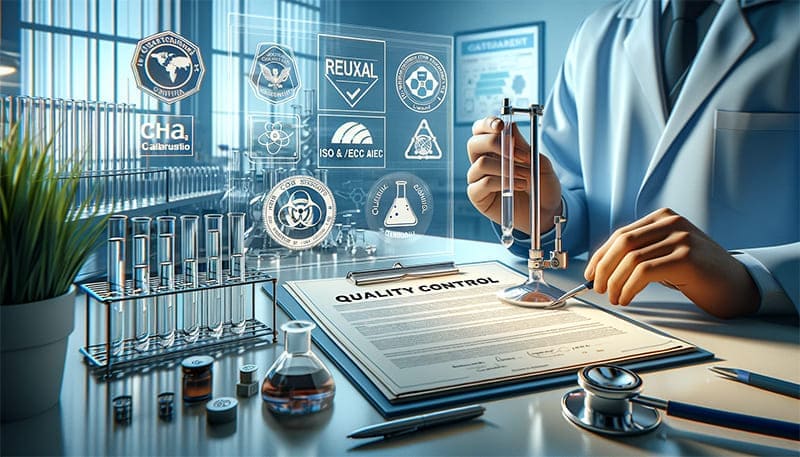
Quality Control and Regulatory Standards
Adhering to national and international standards in calibration, such as ISO/IEC 17025, is crucial for maintaining the accuracy and reliability of laboratory results. These standards provide a framework for consistent operation, ensuring that laboratories meet the highest levels of competence and quality.
To ensure compliance with calibration standards:
- Regular Training: Keep staff updated with the latest standards and calibration techniques.
- Documentation: Maintain detailed records of calibration procedures and results.
- Routine Audits: Perform regular audits to verify adherence to standards.
- Continuous Improvement: Foster a culture of continuous improvement by regularly reviewing and enhancing calibration processes.
Adhering to these practices ensures that laboratories not only meet regulatory requirements but also maintain the trust and confidence of their clients and the public in their results.
Challenges and Best Practices in Instrument Calibration
While calibration is critical, it comes with challenges, including maintaining the calibration schedule, handling delicate instruments, and adapting to new technologies. Best practices involve regular training for technicians, investing in quality calibration standards, and integrating calibration as a part of the routine quality assurance process.

FAQ on Laboratory Glass Instrument Calibration
In my journey through the meticulous world of scientific research, I’ve come to understand the vital role of calibration in achieving precision and accuracy. Here, I’ve compiled a list of frequently asked questions about laboratory glass instrument calibration, sharing insights into why it’s essential, how often it should be done, and the best practices for ensuring accurate results. Join me as we delve into these common inquiries
- What is Laboratory Glass Instrument Calibration?
- Laboratory glass instrument calibration is the process of verifying and adjusting the measurements of glass instruments used in scientific experiments to ensure accuracy and reliability.
- Why is Calibration Important in Laboratories?
- Calibration is crucial for maintaining the accuracy of measurements, ensuring the validity of experimental results, and complying with regulatory standards.
- How Often Should Laboratory Glassware be Calibrated?
- The frequency of calibration depends on the instrument’s usage, the level of precision required, and regulatory guidelines but typically ranges from after every use to annually.
- What are Common Methods of Glassware Calibration?
- Common methods include the weighing method, volumetric comparison, and titration, each suited for different types of glassware and precision levels.
- Can I Calibrate Laboratory Glassware Myself?
- While some basic calibration can be performed in-house, complex or high-precision instruments often require professional calibration services.
- What are the Consequences of Not Calibrating Lab Glassware?
- Inaccurate measurements, compromised experimental results, non-compliance with standards, and potential safety hazards are some consequences of neglecting calibration.
- How Do Environmental Conditions Affect Calibration?
- Temperature, humidity, and atmospheric pressure can affect instrument measurements, making it crucial to calibrate under controlled conditions.
- What is the Role of ISO/IEC 17025 in Laboratory Calibration?
- ISO/IEC 17025 specifies the general requirements for the competence of testing and calibration laboratories, ensuring their work is accurate and internationally recognized.
Conclusion
Embark on a path to unparalleled precision in your scientific work by mastering the art of calibration. Commit to excellence and continuous improvement, and let each calibrated instrument be a testament to the integrity of your research. For a deeper dive into the world of laboratory glassware and the latest operational strategies, enrich your knowledge at glasswaree.com. Join the community of dedicated professionals who prioritize accuracy and quality in every experiment. Together, let’s set new standards of excellence in the scientific world. Your journey towards next-level accuracy starts now!


